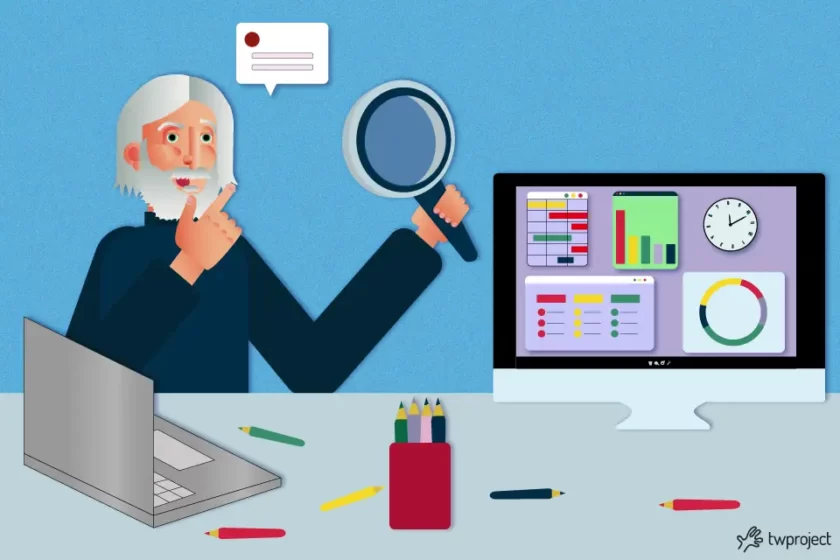Project management trends & insights.
Latest product updates
-
How to perform a qualitative project evaluation

Qualitative evaluation is one of the most strategic steps in project management. Unlike purely numerical analyses, it helps understand perceptions, experiences, expectations, and risks that are “invisible” in Excel spreadsheets. For a project manager, knowing how to perform it correctly means reading beneath the surface and gaining a more complete view of the project, integrating…
Choose the category you are interested in:
AgileComparisonCost managementPm expertProduct updatesProductivityProject managementResource managementTime managementUsage tips
-

The Project Coordinator
Project coordinators are individuals that project managers sometimes need for their project management. CONTENTS Project manager vs. Project coordinator Quality of the project coordinator Education, training and certification of a project coordinator Project coordinator responsibilities There are already many articles that explain the work of a project manager and his responsibilities in detail, but let’s…
-

Project perimeter
Defining the project perimeter, also called the scope of a project, is a challenge that project managers always meet when they first work on a new project. Project scope is the part of project planning that involves determining and documenting a list of specific project objectives, end results, features, duties, tasks, deadlines, and costs. CONTENTS…
-

Comparison of leadership models
Before we begin the discussion on the various leadership models, it is essential that leadership, as a concept in itself, is explained and defined. There is a difference between leader development and leadership development. Leadership development takes place at the individual level and focuses on developing an individual’s ability to learn from experience to integrate…
-

Project management framework
What is a project Framework? Let’s try to learn it together. A strong reason why project management is increasing in virtually all sectors is because the world economy has become project-focused. CONTENTS The six stages of the Project Framework Project framework 1. Initiation phase Project framework 2. Planning phase Project framework 3. Execution phase Project…
-

Talent Management for a Project Manager
Knowing how to manage a talent, as long as you have it at your command, is not just a generic management of human resources. Even when the project plan is drafted and sound, provided the project manager has the tools, technology, and time to complete the project, the key question remains: Does the project manager…
-

The importance of negotiations in projects
Negotiating skills for a project manager are crucial and improving them will set the foundation for a successful project. CONTENTS What is the negotiation in a project Why negotiation is important for project managers Improving project manager’s negotiating skills 1. Improving negotiating skills: Practice 2. Improving negotiating skills: Preparation 3. Improving negotiating skills: Manage your…
-

Leading a team successfully
Leading a team successfully, being an efficient manager and a charismatic leader at the same time may seem an impossible task, however, it doesn’t necessarily have to be so. CONTENTS 9 basic rules to lead a team successfully Rule #1 to successfully lead a team: Find a management strategy and stick to it Rule #2…
-

Project information flows
Project information flows are crucial to the Project Manager. CONTENTS What happens to the information? Interaction between people and documents as a key element for the Information Flow The “Big Four” of interactions and communication Project information flows: Values, mental models and decision-making process Project information flows: complex cases Also due to new design methods,…
-

Analog and parametric estimation: differences in calculation for time and cost of a project
Analog and parametric estimation is what we will discuss today, partly to continue the discussion started in the last article about how to estimate the resources of a project. Project estimation is a key aspect of project management and analogical and parametric estimation techniques are the most commonly used methods. CONTENTS Analog Estimation Parametric Estimation…
-

How to estimate the resources of a project
Knowing how to estimate the resources required to carry out a project is never the simplest of tasks. CONTENTS Resource estimation Estimation of activities’ duration Project planning and critical roadmap Resource equalization Resources are people, equipment, places, money or anything else a project needs to be executed. As a result, resources must be allocated for…
-

Project work: a method that pays off
Working on projects and more in detail project management is not an impractical science, even if some people see it that way. In fact, project work is a set of tools and practices, a kind of roadmap, which allows managers to lead a project from point A to point B and to do it efficiently…
-

Project management: fundamentals and tools
Project Management is a series of activities that allow, in coordination with each other, to successfully implement certain projects. CONTENTS The first fundamental of Project Management: the people The second fundamental of Project Management: the process The third fundamental of Project Management: the tecnology Many organizations struggle, however, to understand how to control the success…
